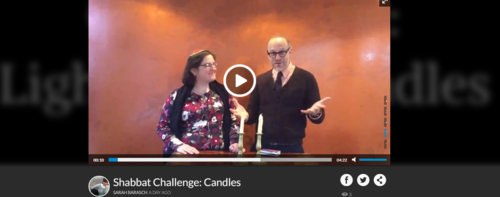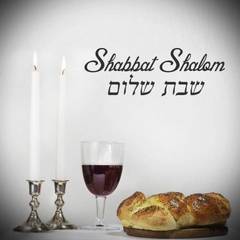Dear Bnai Keshet,
It's time for our first Soulful Shabbat installment: Lighting Candles/Making a Separation.
 If you're an absolute beginner at lighting candles, then your challenge is clear: just get them lit! Use traditional candle sticks and candles, tea lights, or even improvised oil lights (you need a glass, a weighted wick which can be made of twine or thick cotton string, and some olive oil). We are all beginners at one point or another. This week, the two of us were beginner videographers. Like you, we will improve!
If you're an absolute beginner at lighting candles, then your challenge is clear: just get them lit! Use traditional candle sticks and candles, tea lights, or even improvised oil lights (you need a glass, a weighted wick which can be made of twine or thick cotton string, and some olive oil). We are all beginners at one point or another. This week, the two of us were beginner videographers. Like you, we will improve!
Feel free to read the blessings in Hebrew or in English, whatever makes you more comfortable. Here is a very slow primer on singing the blessings in Hebrew.
If you are a regular candle lighter, or a semi-regular lighter, what can you do this week to bring more a greater intention to your lighting? How can you more fully separate yourself from the work of the week and Shabbat? How can you be more present to appreciate the light of Shabbat entering your home?
You may choose to add a kavanah (a spoken intention or prayer) to your candle lighting practice this week.
Here are some options:
Trisha Arlin's "We Must Pray and We Must Do"
Sarah bas Tovim's Techineh for Candle Lighting
Hannah Szenes: Blessed is the Match
Blessed is the match that's consumed in kindling a flame.
Blessed is the flame that burns in the secret depths of the heart.
Shas Tkhines (from a collection of women's prayers/tkhines, author unknown)
Almighty God,
Grand me and all my loved ones
A chance truly to rest on this Shabbat.
May the light of the candles drive out from among us
The spirit of anger, the spirit of harm.
Send your blessings to my children,
That they may walk in the ways of your Torah, your light.
Shabbat Shalom,
Rabbi Ariann and Rabbi Elliott


If you're an absolute beginner at lighting candles, then your challenge is clear: just get them lit! Use traditional candle sticks and candles, tea lights, or even improvised oil lights (you need a glass, a weighted wick which can be made of twine or thick cotton string, and some olive oil). We are all beginners at one point or another. This week, the two of us were beginner videographers. Like you, we will improve!





